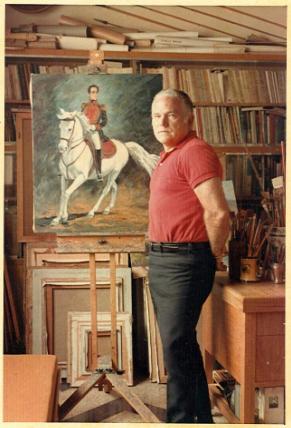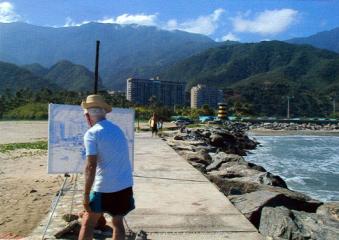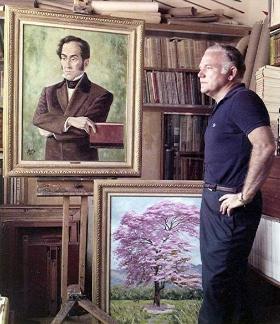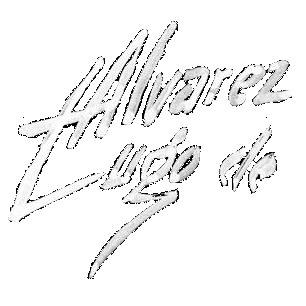 Good disposition for painting is seen in Alvarez de Lugo very early on, and thus receives first guidance on drawing at home from his uncle Ramon Santana, one of the founding members of the Circulo de Bellas Artes de Caracas, creator of the Museo Criollo Raul Santana (Caracas Municipal Council).
Good disposition for painting is seen in Alvarez de Lugo very early on, and thus receives first guidance on drawing at home from his uncle Ramon Santana, one of the founding members of the Circulo de Bellas Artes de Caracas, creator of the Museo Criollo Raul Santana (Caracas Municipal Council).
Formal studies in painting begin for Alvarez de Lugo at the School of Plastic Arts of Caracas in 1941, where he specialized in figures and portraits. It is here where he learns the craft of his profession, which he understands to be experiences of faith, a delivery of an ideal, vocational service. Art is like a militia that demands total and full commitment from the militant. And that is what Alvarez de Lugo learned, and that is what we see throughout the years of dedication to painting, which would be fair to say that it has been all of his life.
Amongst the teachers of Alvarez de Lugo were the Spaniard Ramon Martin Durban, who shows him that a portrait is not merely a copy of the of the physiognomy, but that behind the façade in which the gestures and features that identify a character, the artist must discover and bring out the soul.
 In 1950 Alvarez de Lugo registers at the Famous Artist Course of Westport Connecticut, in which such renowned masters like Ben Stahl, Stephen Dohanos, Austin Briggs and Norman Rockwell, amongst others have participated. All these artist naturally make the artist consider a painting within the configuration of nature and an academic concept, even if technically is very free, always with an impressionist sense about it all, with great knowledge and incredible control on drawing.
In 1950 Alvarez de Lugo registers at the Famous Artist Course of Westport Connecticut, in which such renowned masters like Ben Stahl, Stephen Dohanos, Austin Briggs and Norman Rockwell, amongst others have participated. All these artist naturally make the artist consider a painting within the configuration of nature and an academic concept, even if technically is very free, always with an impressionist sense about it all, with great knowledge and incredible control on drawing.
In 1964 he is involved in his first individual exhibition at the Sala Armando Reveron with portraits, female nudes, horses and folklore motives. Since then he has been considered as one of our most important nurturers of figurative realism. Afterwards there were several individual and collective exhibitions in Venezuela and abroad, which can be looked up in our web site for exhibitions; and which received very important opinions and criticism from specialized critics.
In 1965 The National Academy of Medicine asks for a portrait of the Liberator Simon Bolivar to display in their conference room, thus initiating a series of important portraits of Simon Bolivar and others. In this case a particular portrait of Simon Bolivar is worth mentioning which is displayed at the Palacio de Miraflores, as well as several portraits of the founders of the house of Boulton, a portrait of Simon Bolivar for Seguros Venezuela and a portrait of the painter Arturo Michelena for the International Airport in the city of Valencia.
The design of a commemorative postal stamp in Venezuela honoring the landing of the man on the moon in 1969 is a work by the artist Luis Alvarez de Lugo. Since his first exhibition he is seen as one of the most important painters of the Cerro El Avila dedicating his solo exhibition in 1994, exclusively to this subject. With the support of great knowledge in drawing and of anatomy, he begins in 1980 his sculpting work in cast bronze, in the city of Sarasota in Florida. Undoubtedly, the result of the life and work of Alvarez de Lugo is the development of skills in a multiplicity of matters from landscapes, folklore scenes, portraits, nudes, and figures including flora and fauna. Aside from his daily painting work, he dedicates two days a week to teaching classes of drawing and painting to children and adults, which he gives from his own workshop.
